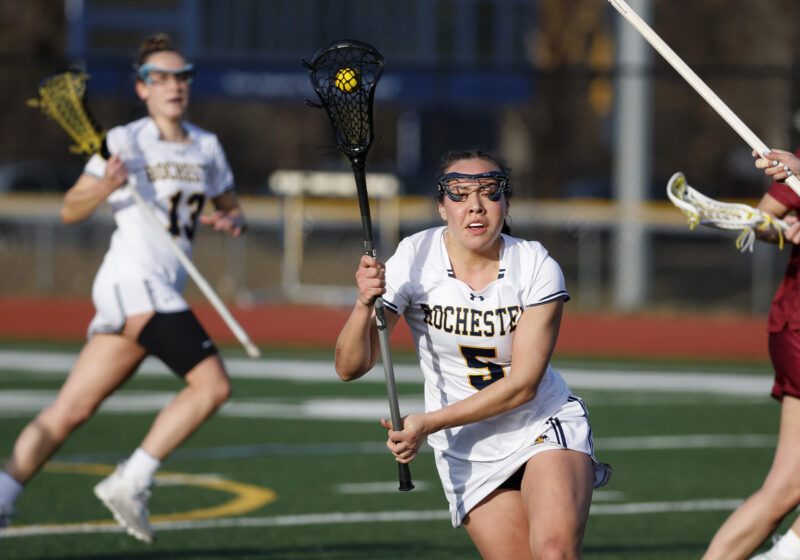While UR labors above ground on dorms, dining halls and academic buildings, a group of scientists in a brand new basement laboratory is laboring with microscopic particles 10,000 times smaller than a single flake of dandruff.
URnano, a nanotechnology research and fabrication center, was officially unveiled on Aug. 26 after nearly three years of laborious construction, and is being touted as a major advancement for the University and an important force in repairing Rochester’s slumping manufacturing economy.
The center is composed of a metrology lab with microscopes and measuring tools on the second floor of Wilmot Hall and a 2,000-square-foot clean room fabrication center in the basement of Goergen Hall.
UR received a significant amount of federal funding for the $10 million endeavor — $4.4 million in federal tax dollars — thanks to what University officials have said was Rep. Louise Slaughter’s instrumental support for the project since the idea was first proposed in 2007.
URnano is different from most other nanotechnology centers in New York State and will further the research of UR professors in several different disciplines, particularly materials science and engineering, according to Optics professor Brian McIntyre, who is the Operations Director of URNano. McIntyre and Nicolas Bigelow, Chair of the Physics Department and a professor of optics, will run URnano.
“The center is really a springboard for what UR is known for — optics especially,” McIntyre said. “There will be a certain level of overlap with nano centers at big universities like Cornell, SUNY Albany and R.I.T., but our work will be different because silicon and electronic devices are not our specialty.”
Many of New York State’s major nanotechnology research centers focus on chip fabrication for electronic devices, which have been major economic engines in regions like Albany due to the research at SUNY Albany’s College of Nanoscale Science and Engineering.
URnano will take advantage of UR’s unique strengths — notably the close alignment with a major medial center — to research non-silicon products like medical implant devices. With an increasingly aging population, McIntyre believes nanotechnology will play a huge role in the future of devices like knee and hip replacements and dental implants.
“It is a huge amount of money, but this room is going to bring money to the University and the entire Rochester community,” McIntyre said. “It’s an opportunity to really impact a lot of different disciplines and a lot of different lives.”
Without any of the equipment, the basement itself cost $3 million because of the extensive support structures and highly controlled environment needed for a cleanroom. Dust and other particles cannot enter the room because of the size of nanotechnology materials.
The center is currently being used mostly by graduate students conducting research, but chemistry Professor Todd Krauss, who served on the original committee that developed the concept of URnano, hopes that undergraduates will be using the center within the next year.
“With all the wonderful new equipment, we should definitely have undergraduates in the cleanroom over time, especially for summer research,” Krauss said.
McIntyre plans to teach an undergraduate “hands-on class” in the cleanroom within the next year. He also teaches a semester long class that trains students to use the microscopes in the metrology lab, which he says is an integral part of nanotechnology because “you can’t make anything in this field unless you measure it.”
Krauss and McIntyre said the center will help both small businesses and start-ups, without access to expensive nanotechnology, and larger companies — like Kodak — that might not have access to equipment like that of URnano.
“For local and small companies, it’s much more cost effective to come in and make a measurement than it is to go out and buy a microscope like the ones we have,” Krauss said. “That’s the way the center will spin off jobs.”
Chemical engineering and economics double major Victoria Zapata, a sophomore, has already worked in the metrology lab and said she will begin work in the cleanroom within the next two weeks. Through a summer research project with Krauss, she worked with nanotubes that will be put together with polymers to create a fuel cell.
Zapata said the group of researchers needed a cleanroom to test the tubes this summer and had to drive to Cornell to use their equipment — a process that was both time-consuming and expensive because universities, including UR, charge an hourly fee for the use of nanotechnology equipment.
“It’s really helpful,” Zapata said. “The closest university is two hours away so it takes the whole day. I think [the cleanroom] has a lot of benefit for us and I hope more undergraduates join these research projects.”
“It’s handy,” said Greg Pilgrim, a second year Chemistry Ph.D. student. “The clean room gives me the opportunity to do research without driving all the way to Cornell.”
Pilgrim, who said he plans to go into the nanotechnology industry after graduating, also sees benefits beyond those of convenience.
“Cornell has massively different equipment, so I think UR’s cleanroom will build both formal and informal partnerships with other universities,” he said. “I’ll still have to maintain access to other cleanrooms, which is a great thing because it creates an exchange of ideas.”
Buletti is a member of the class of 2013.

